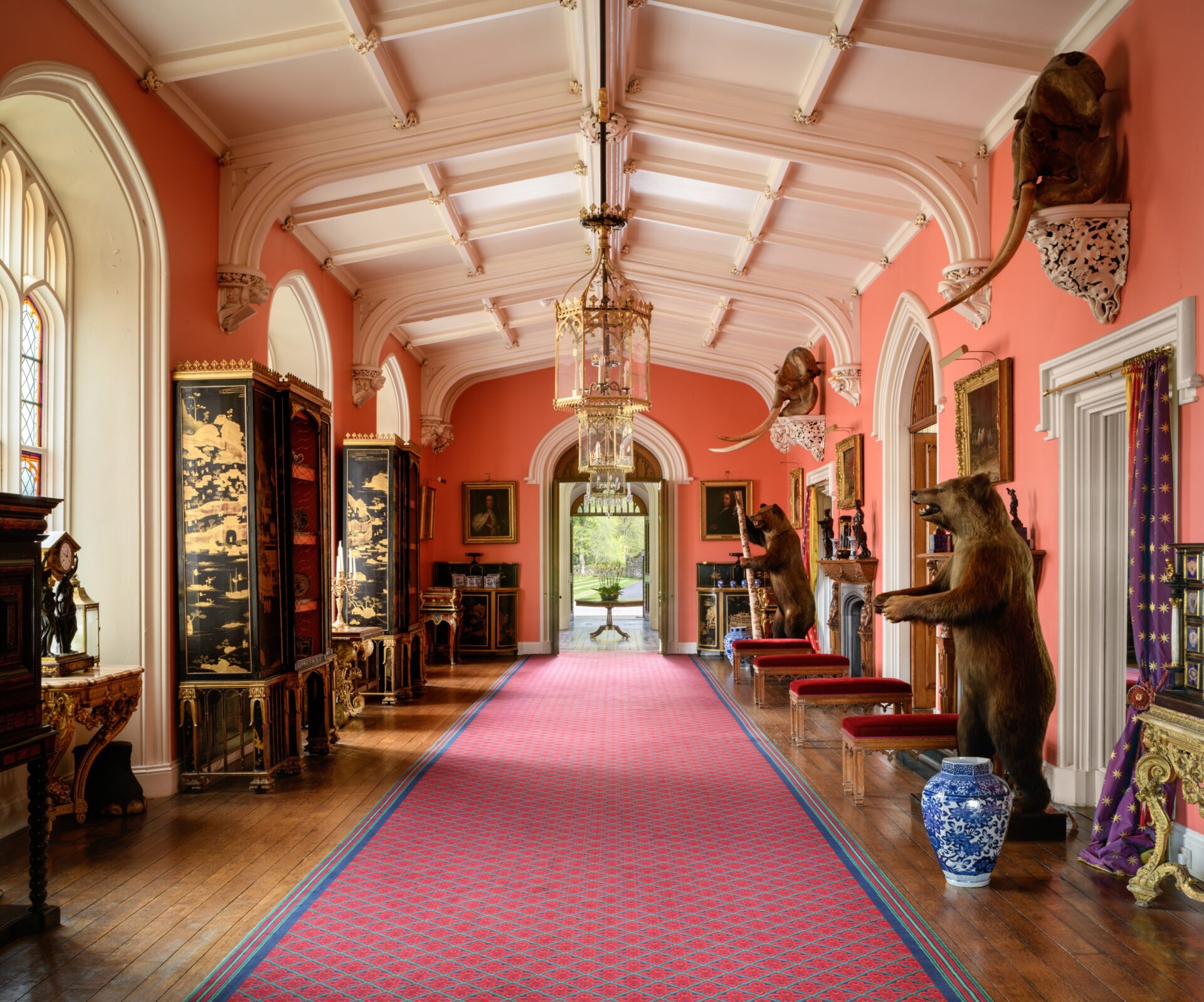The Inner Hall is perhaps the most eclectic room in the palace, with furniture and curiosities collected by generations of the family from around the globe. Looking up, you will see another intricately carved ceiling paying homage to Scone’s religious and royal past. Hanging from the vaulted ceiling are three Regency Giltmetal and Lacquered Brass Lanterns in the Gothic style.
To the right of the room as you enter is a Florentine Hardstone-Mounted Ebony Cabinet. Crafted in the manner of Italian sculptor Gian Battista Foggini in the second half of the 17th century, it has a central cupboard inlaid with a vase of flowers. This cupboard encloses a case of drawers which lift to reveal further, secret drawers. The drawers are faced with panels of pink agate on a lapis ground flanked by four ivory columns surmounted by gilt-metal plinth figures. The lapis in this piece of furniture came from Afghanistan.
The room, which would traditionally have been used to welcome visitors after their journey, has two fireplaces, beside which weary travellers could shake off the worst of the Scottish weather. Visitors to the house may have been shown to one of the four Scottish George IV Oak Stools, which were designed by architect William Atkinson especially for this room.
The European Brown Bears, which guide your passage as you make your way along the room, were shot by Sir Lancelot Carnegie, great-grandfather to the present Earl, when he was Secretary at the British Embassy in Moscow in 1908.
Opposite the bears, underneath the windows, are a pair of Louis XVI Early Neoclassical Console Tables (circa 1760). Made from Giltwood with moulded slabs of veined rouge marble, these pieces came to Scone Palace from Kenwood House, home of the 1st Earl of Mansfield.
Keeping time in this room is a magnificent Restauration Ormolu and Rouge Grotto Marble Striking Pendule à Cronos Clock by Thomire (circa 1815). Modelled in the Neoclassical style of Thomire’s work, the clock shows Cronus, the Greek God of Time, supporting a star-studded globe.
There are several significant paintings in this room, two of which were painted by David Teniers II (1610- 1690) and bought for the 3rd Earl in 1810 by William Seguier, the first Keeper of the National Gallery in London. Teniers II was a Flemish Baroque painter who, during his lifetime, innovated and established a wide range of artistic genres. He is particularly associated with having developed the Tavern Scene, or Peasant Genre as it is often referred to. This genre, dating from the 17th century, often depicted small gatherings of people drinking and making merry. However, his compositions were not always entirely wholesome as can be seen in the painting titled Monkeys which hangs above the fireplace in this room. Here the human figures have been replaced with monkeys who are all gambling, eating, and smoking in a nondescript interior. Alongside Monkeys is another work by Teniers II, entitled Two Dromedaries with Grooms in a Stable.
But the most significant painting in this room can be seen to the left of the doorway as you exit the room. The Village Politicians was commissioned by the 3rd Earl for 30 Guineas and caused a sensation when it went on exhibition in 1806. It was celebrated for its likeness to the work of Teniers II by the way in which it echoed the Tavern Scene genre with its portrayal of the inflammatory effects of drink, newspapers, and gossip. The painting, which was undertaken by Scottish artist David Wilkie RA, holds a respected place in the Scottish art canon and is still requested for exhibitions today.
Either side of the same doorway are a pair of Regency Ebonised and Parcel-Gilt Side Cabinets. These cabinets are inserted with 18th century Chinese black lacquer chinoiserie panels, each with a galleried superstructure and D-shaped ochre marble top above a panelled door flanked by fluted pilasters and bowed sides
